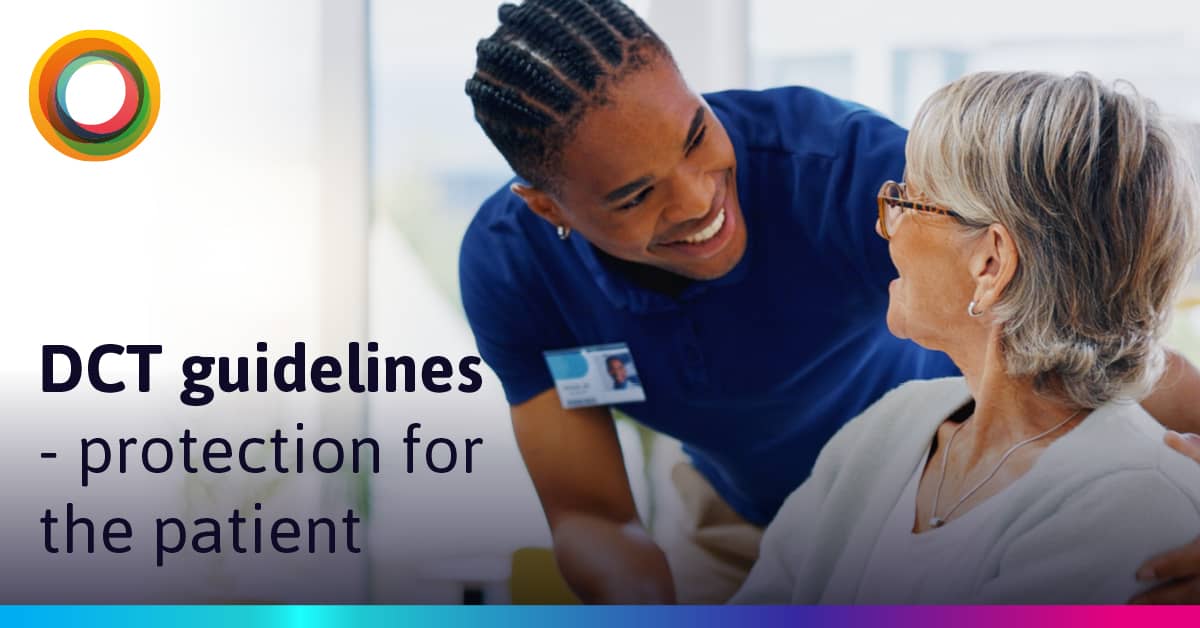
Earlier this year, The FDA released Draft Guidelines on Decentralised Clinical Trails for the industry, investigators, and other stakeholders.
Over recent years, we have seen an exciting evolution of the clinical trial landscape. With it, guidance, structure, and expectation management are crucial to ensure we continue to operate confidently and ethically.
We’re proud to put patients first in clinical trials, ensuring remarkable patient experiences and outcomes. So in this blog, we explore why establishing industry-wide guidelines for DCTs is important from an often overlooked viewpoint – the patient perspective.
A simple Google search for “why are the FDA draft DCT guidelines good for patients” reveals an uncomfortable reality about the industry’s reaction to the FDA’s first pass on guidance.
The results cited the importance of data robustness, how practicalities support a push for diversity in trials, and the importance of communicating early with the FDA on their draft guidelines.
However, the importance of these guidelines for the patient is only mentioned once or twice in a page full of returned search results. This seems particularly obtuse when there would be no clinical trials without willing, engaged, and committed patients.
Protecting the patient’s interests protects the trial
It is agreed industry-wide that better patient engagement and retention lead to better clinical outcomes.
As well as evidence of the poor representation of diverse patient groups enrolled in clinical trials, the most common reasons patients give for dropping out of clinical trials fall into four categories – inconvenience and overwhelm, lack of communication, feeling underappreciated, and financial barriers.
Successful trials depend on patients who feel understood, comfortable, confident, and included in their care. So, having guidelines that clearly communicate how DCTs work, what is expected of them, what tools and tech are available to help them engage in a trial, and how easy it is going to be to stay within a long-term trial – all go a long way in securing successful outcomes and efficacy of a DCT.
Clear communication
Guidelines serve as a clear stake in the ground, ensuring transparency around what a trial looks and feels like, what can happen during visits, and how patient data is monitored, stored, and shared.
This establishes what patients can expect during their time in a DCT, an essential first step in standardising and normalising the experience and clearly communicating what the patient should prepare for.
Establishing clear, standardised procedures and practices for DCTs will lead to a better patient experience, as this transparency manages expectations, an essential element for trust-building within patient communities.
Reducing the burden on the patient and/or their caregiver
Establishing a streamlined approach to administration and monitoring processes will, in turn, bolster participant enrollment, facilitating a more seamless experience for patient recruitment and retention.
Anything that enhances comfort for trial participants or reduces the caregiver burden has to be a positive step forward in ensuring trial retention.
Encourage socio-economic, cultural, and geographical diversity
Remote participation in trials will encourage enrolment from the communities so often under-represented in clinical trials. Identifying what and when telehealth, med-tech, and mobile health methodologies can be used, will enable us to take trials to patients instead of expecting the patient to come to the trial.
A word of caution at this point, however. Just because we have the ability and established framework to take a trial to where the patient is, we cannot assume that they will enrol and that trials will become diverse by default.
Establishing these Guidelines is the first step in standardising what’s possible, but the industry still has a huge hill to climb in establishing trust. We explored the issues around the lack of trust in one of our groundbreaking mdtalks with Dr Eneida Nemecek earlier in the year.
The May FDA draft guidelines were welcomed by an industry looking for clarification and direction, but lets not forget the pivotal figure in this story – the patient. For them, it is a vital step forward in demystifying a process that could help them in the fight for their lives.
Let us keep the conversation going. How can we protect the patient voice more when we’re responding to the FDA draft guidelines?
Share your thoughts with us on Twitter (X)







